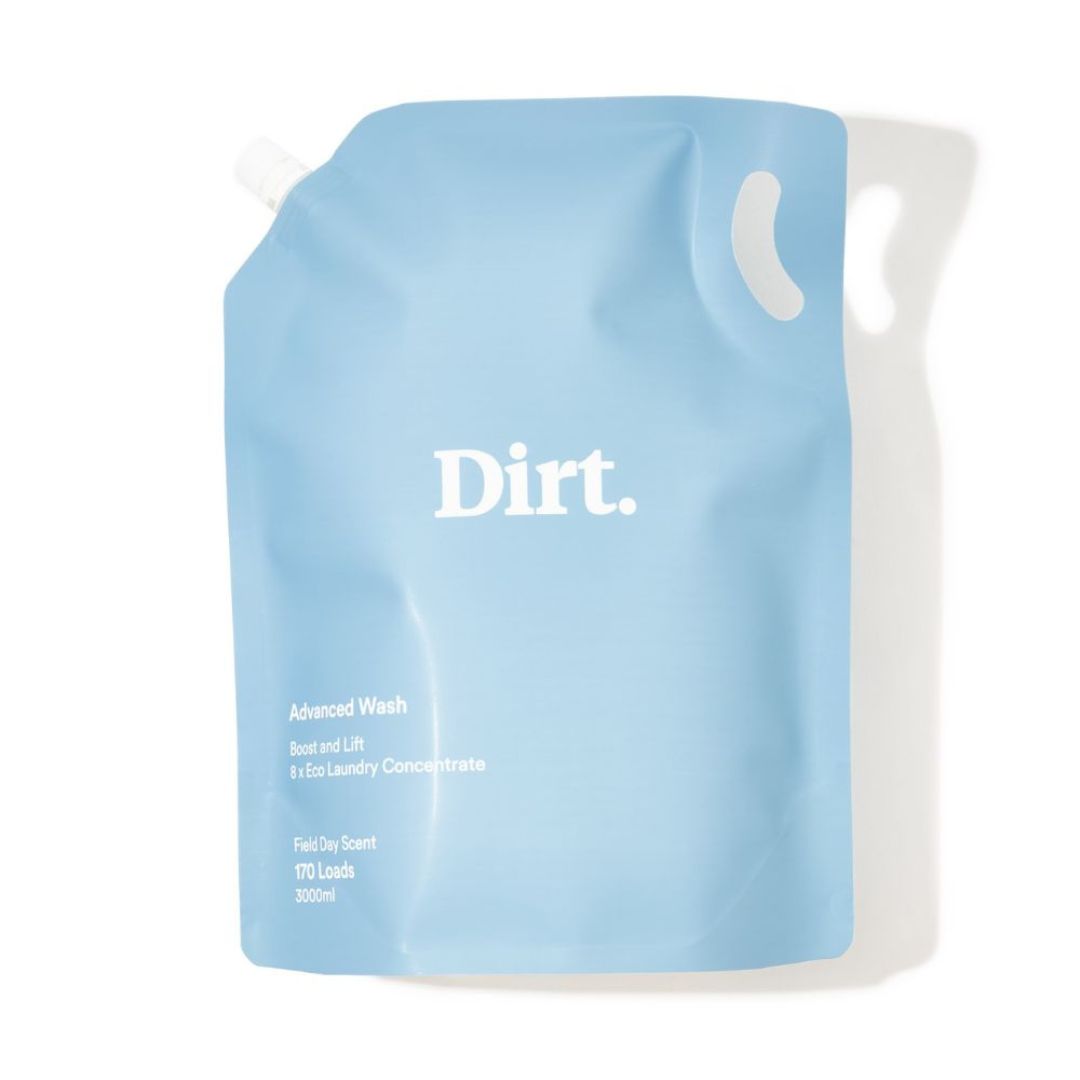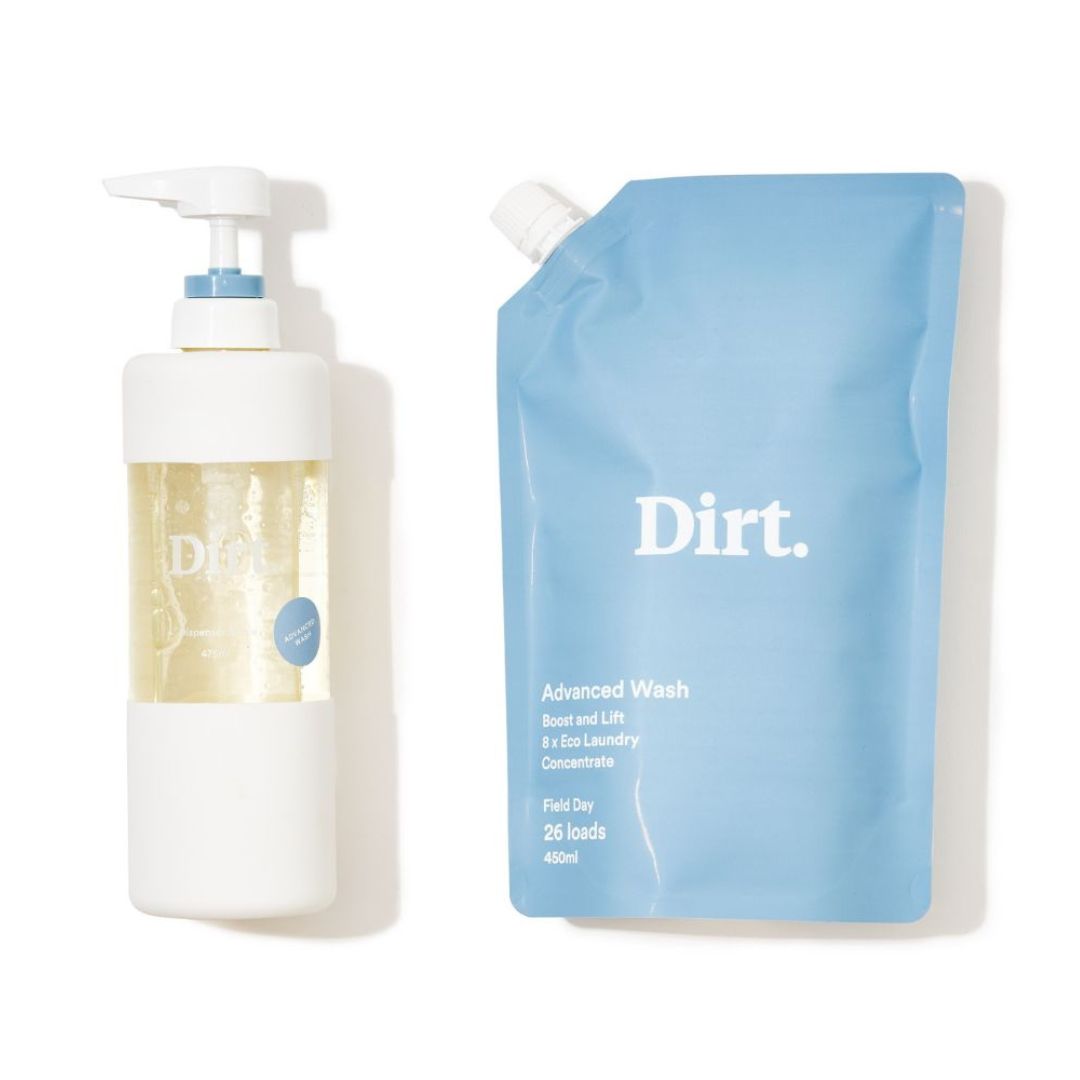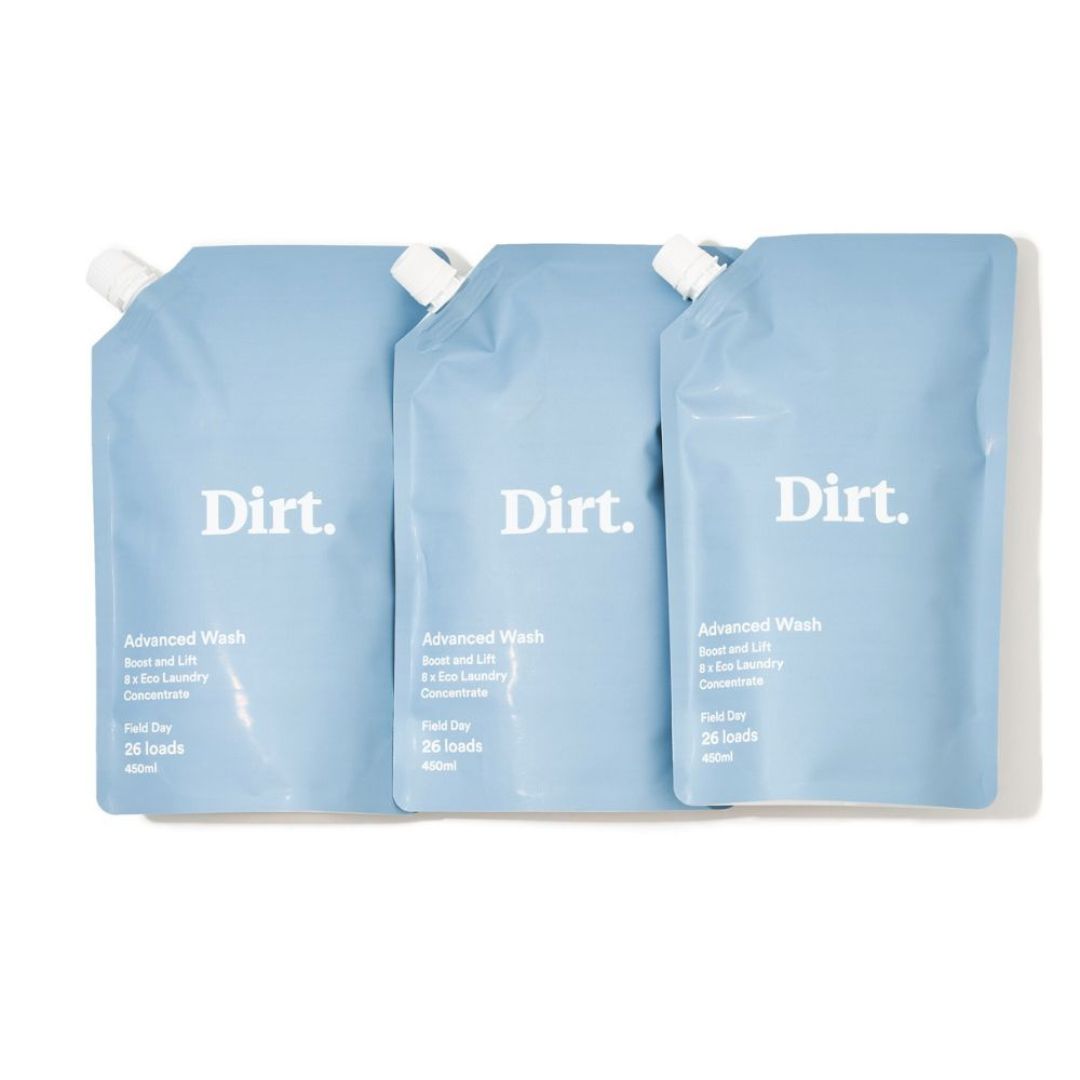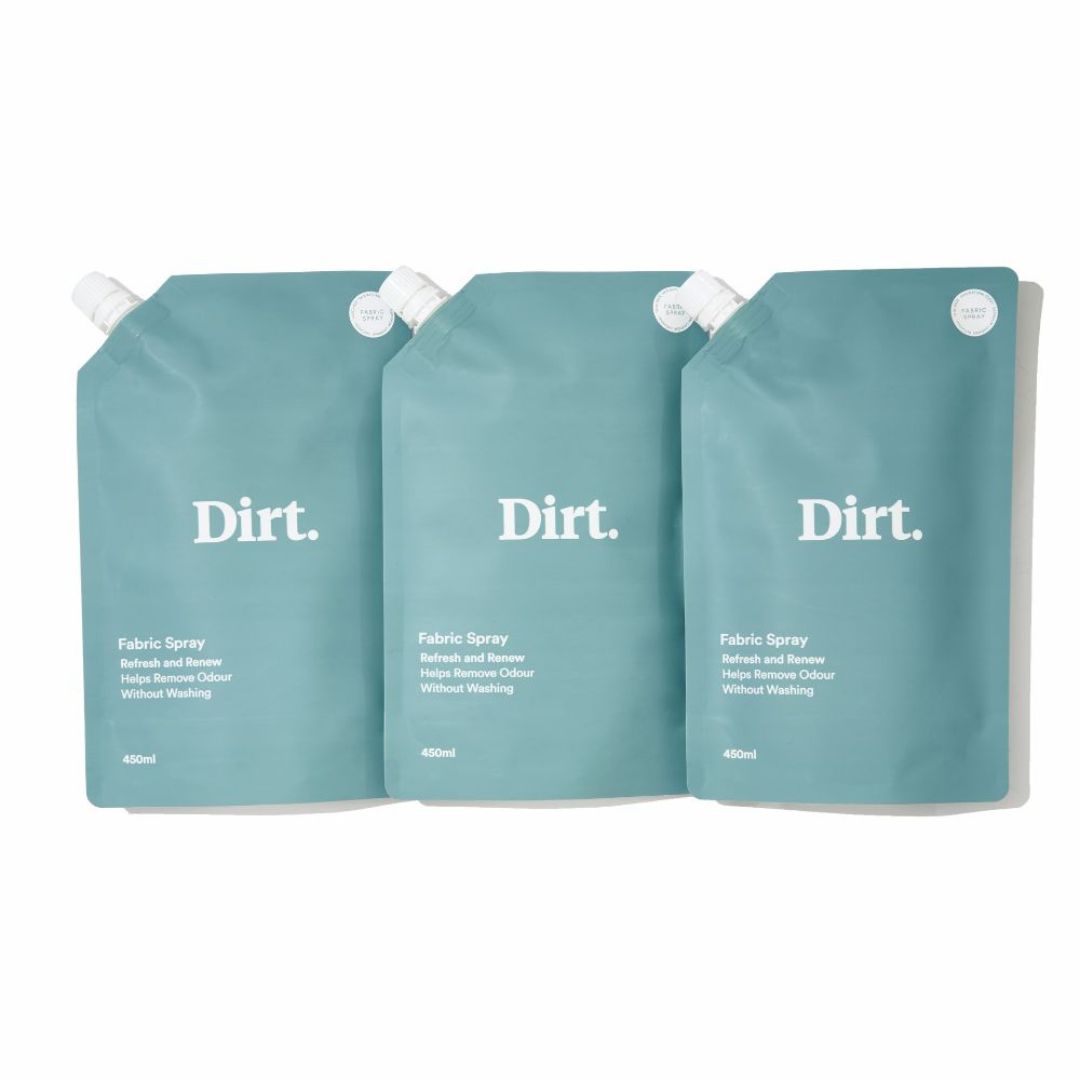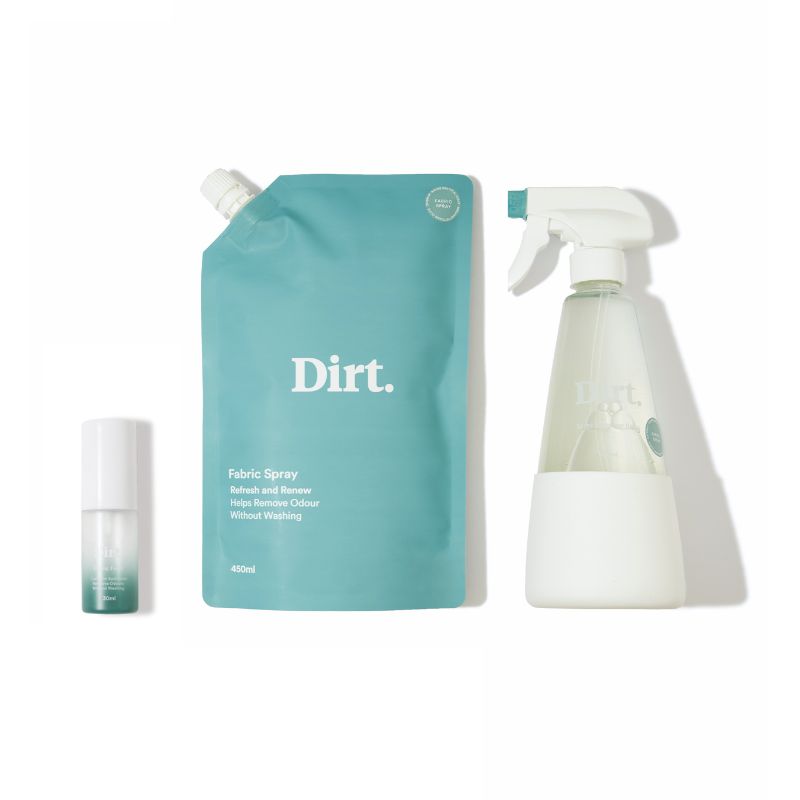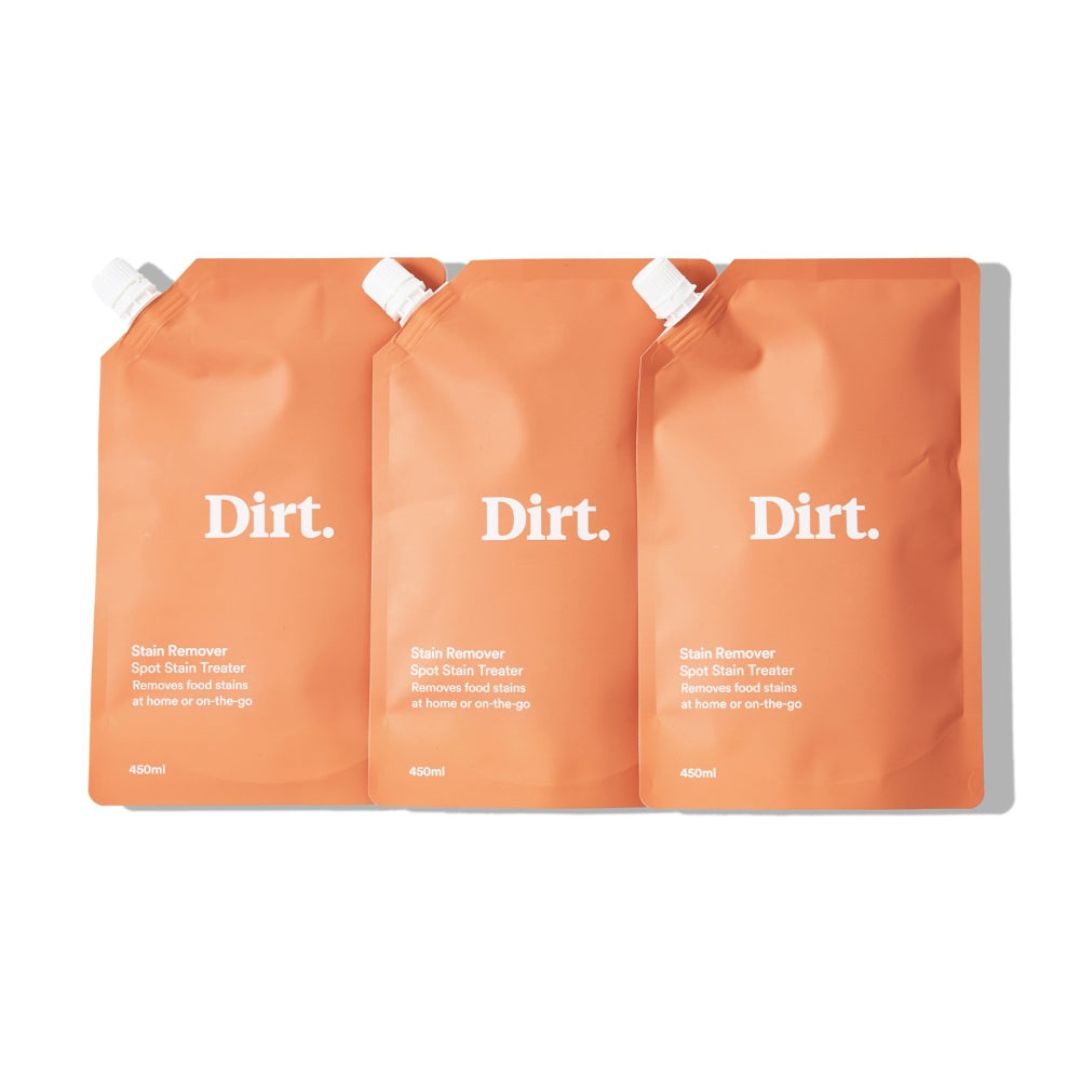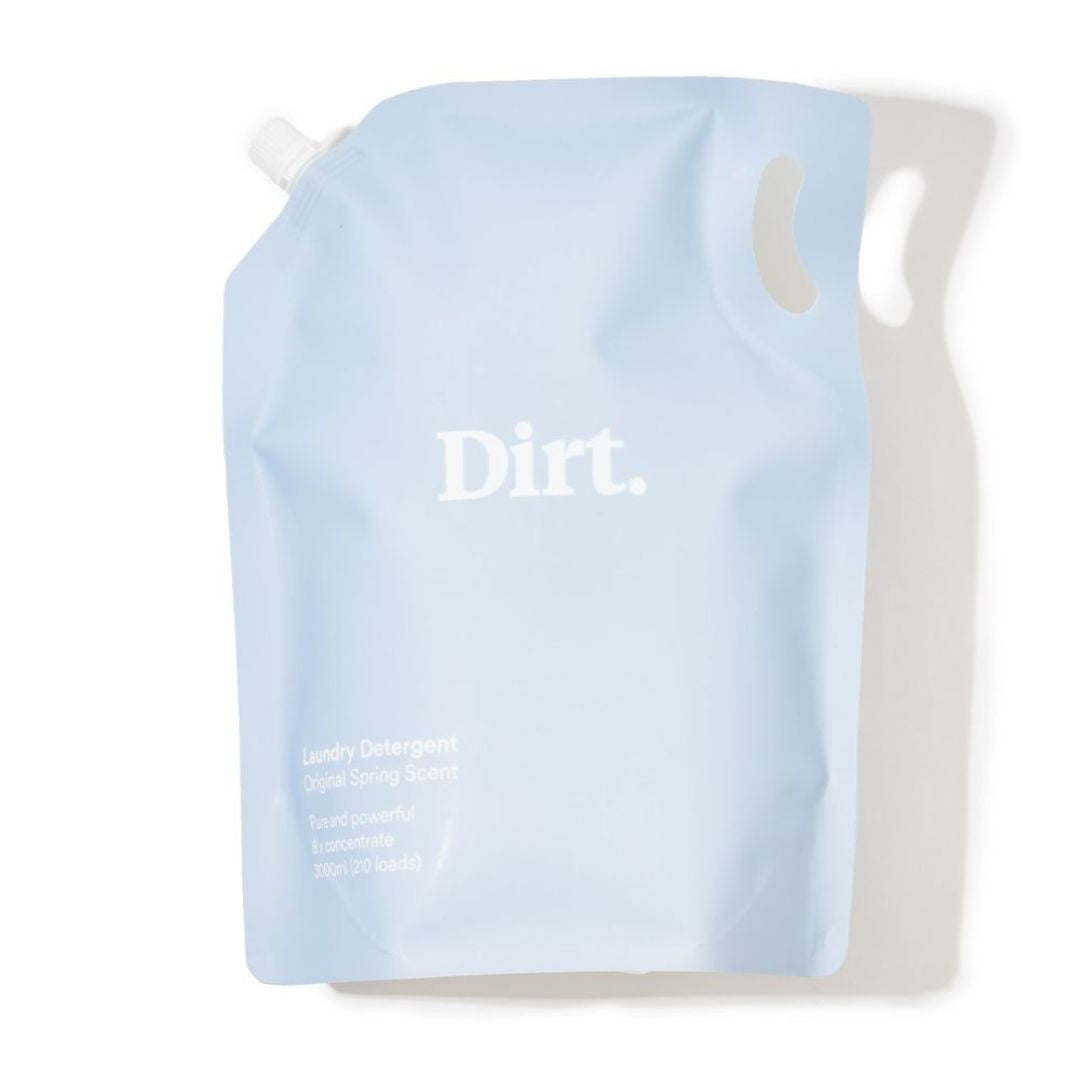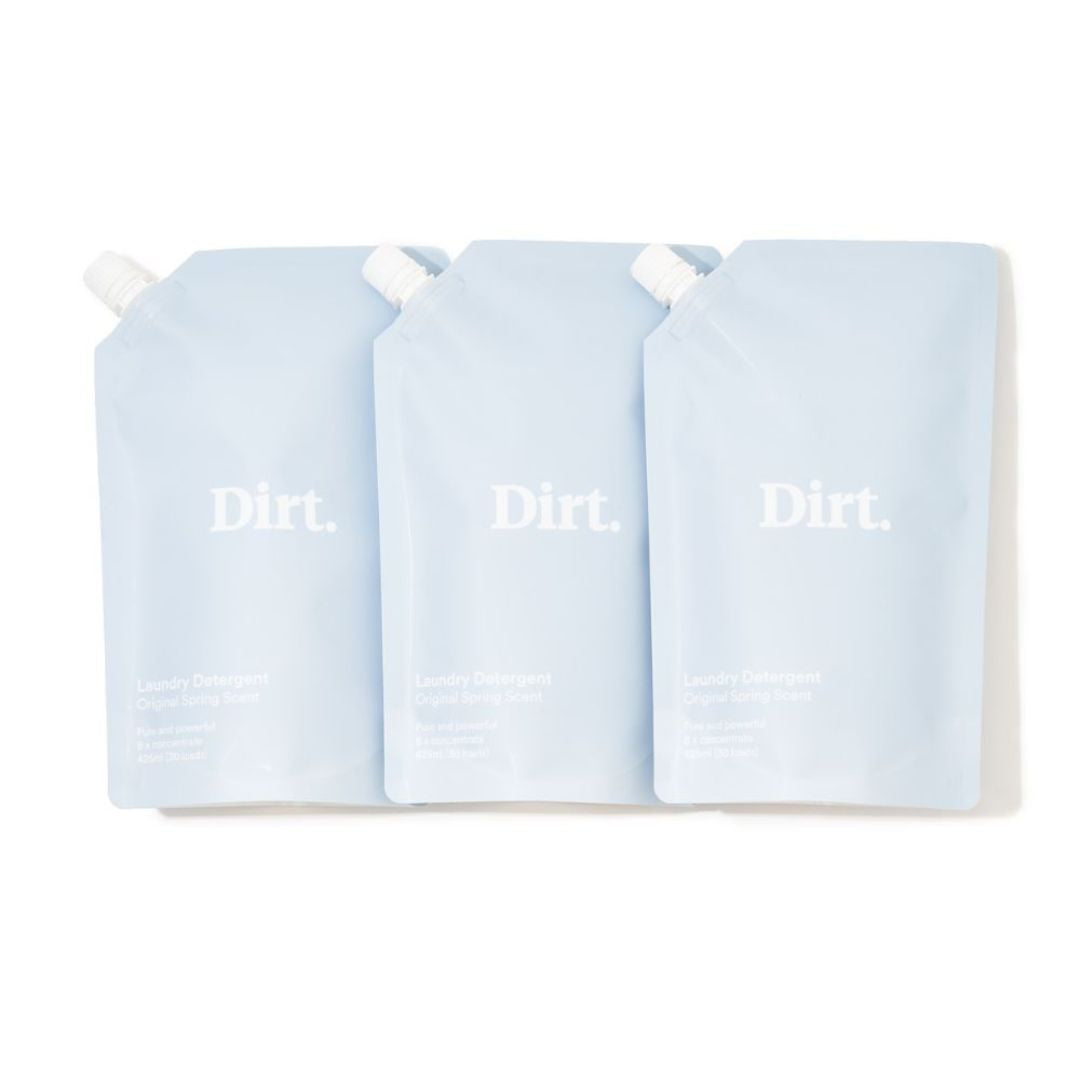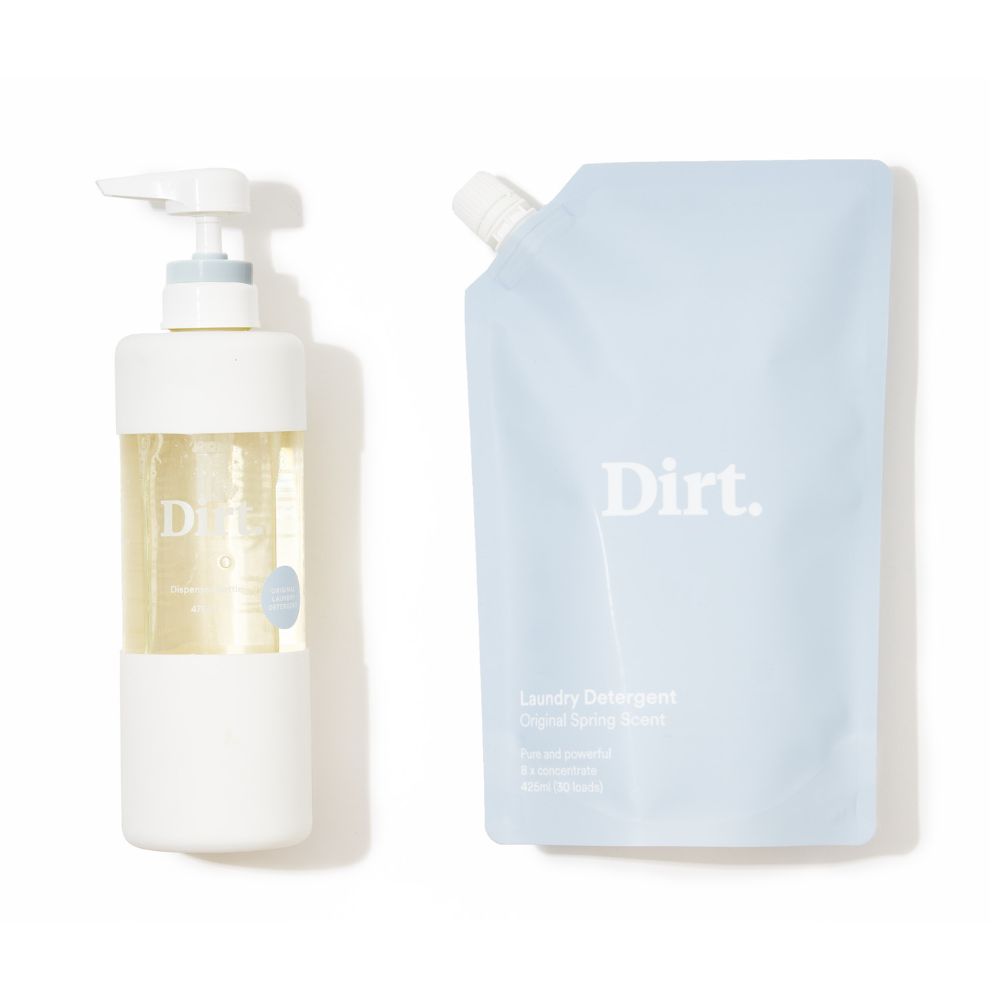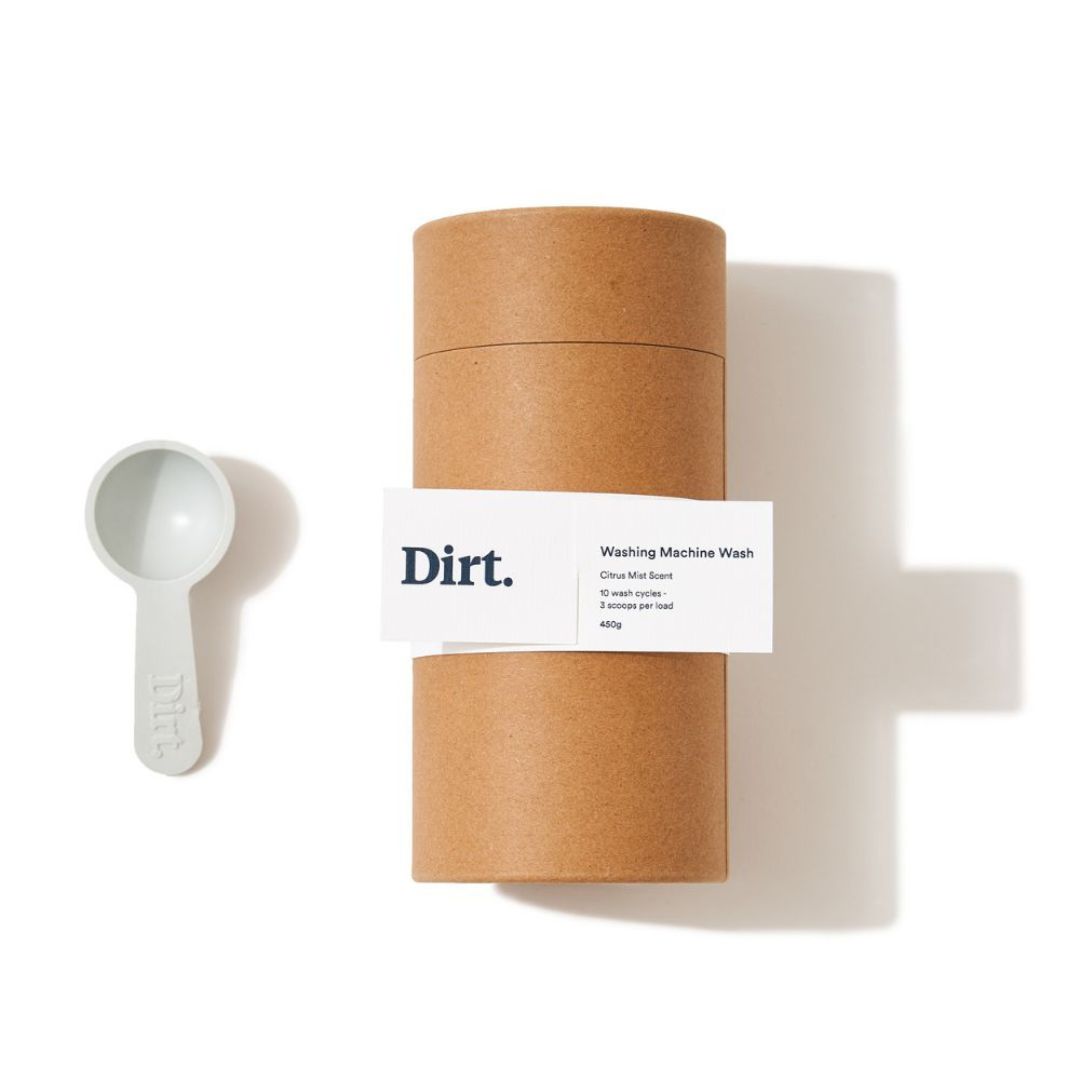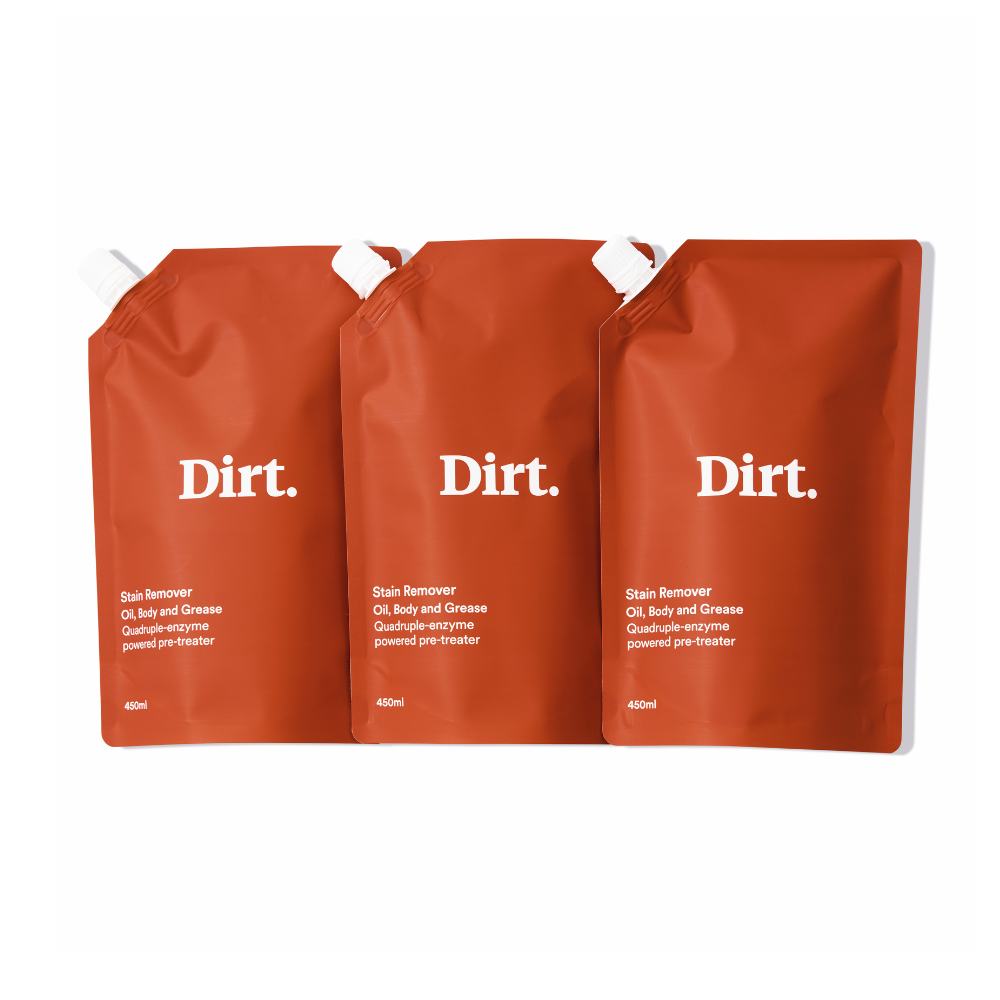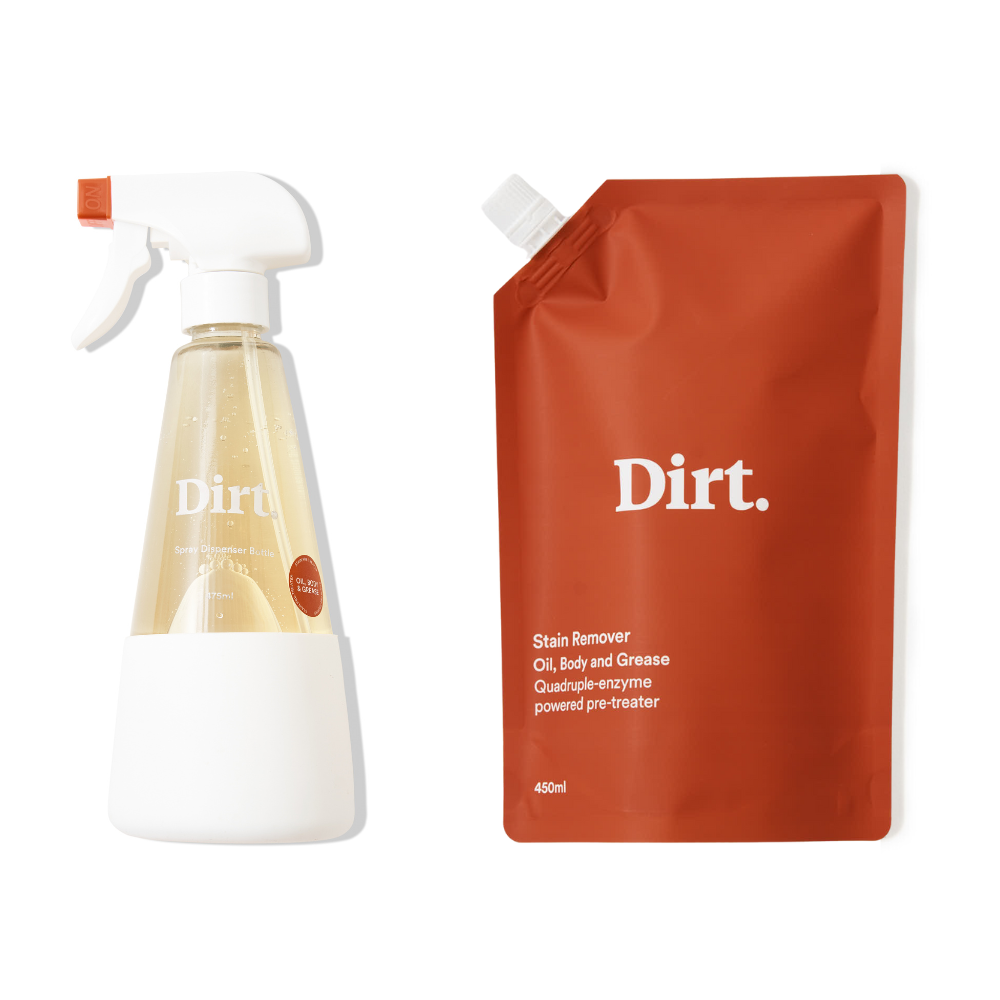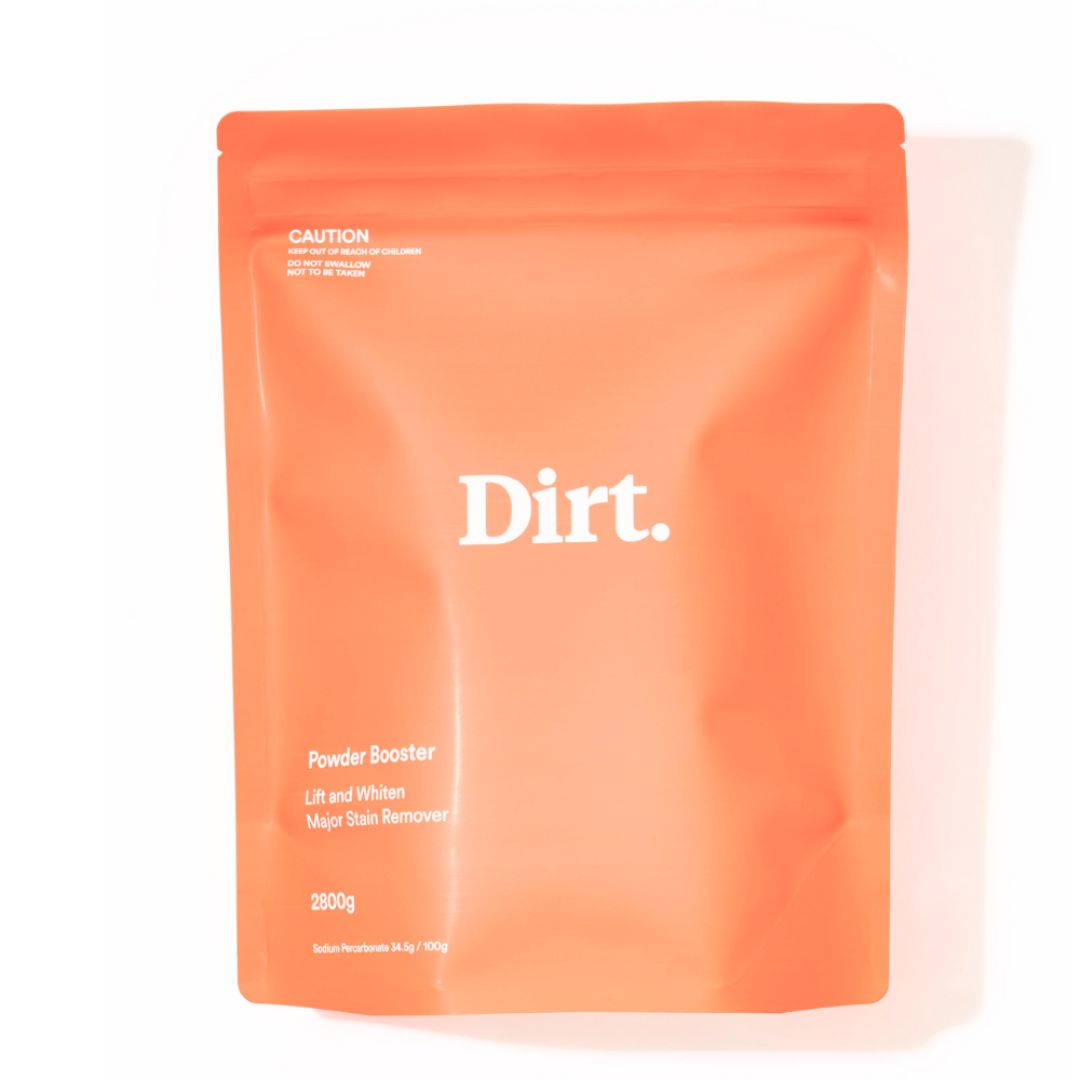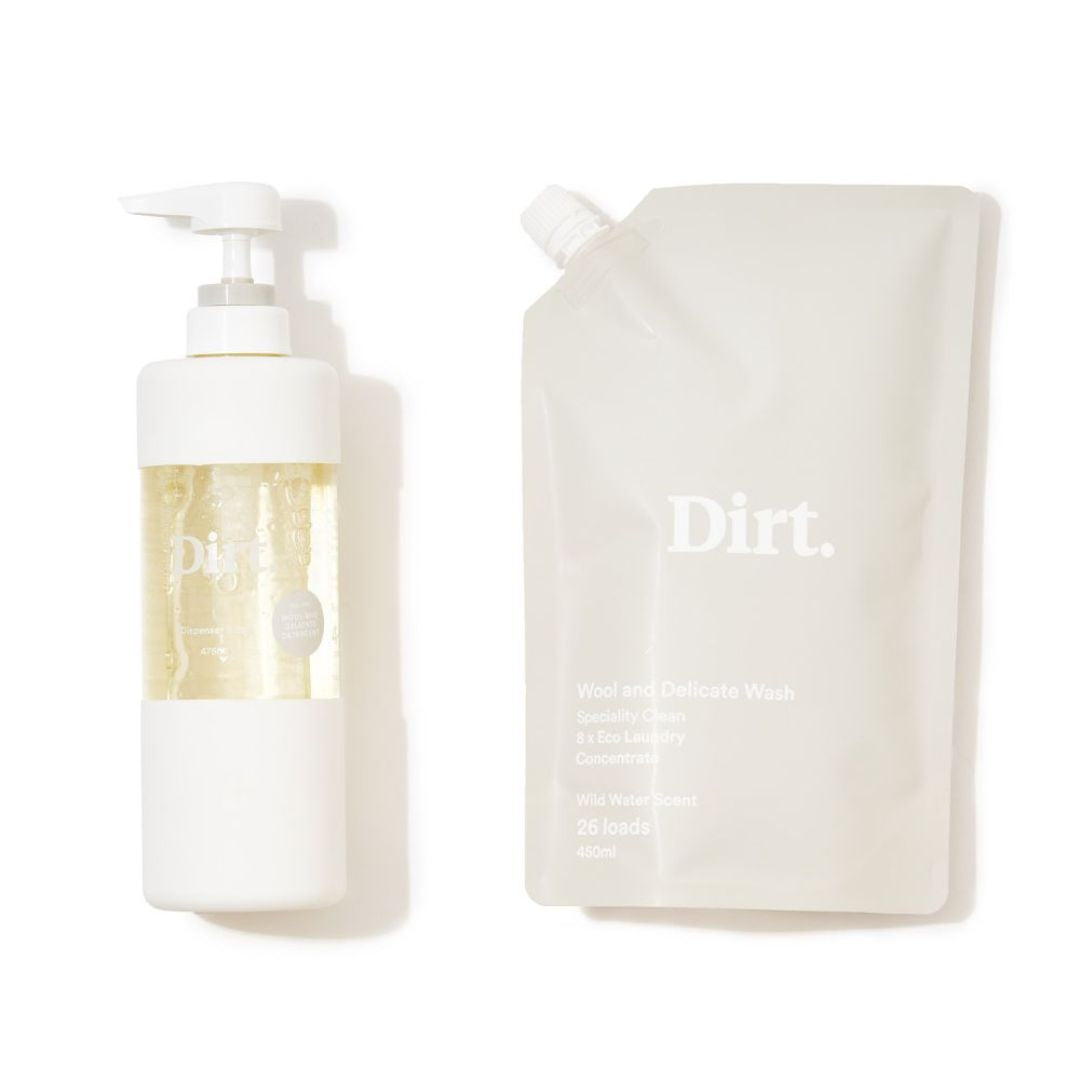We know that plastic is a very scary buzzword in today’s society but we wanted to bring some nuance to the conversation around packaging materials.
We acknowledge that plastic is a massive problem when it comes to the environment and sustainability but in reality it can be a really helpful and essential material. For example, it’s essential for a lot of people with different needs and as we learned in the pandemic it can be essential for the healthcare sector.
Within our Dirt products we use a mix of plastic and glass in our products.
Our dispenser bottles are made of glass and are designed to be refilled and reused forever.
We chose glass because it’s endlessly reusable and it’s also clear - so allows you to see how full your bottle is! The silicone sleeve is 100% non-toxic and is BPA, BPS and PVC free. It is a great protective layer reducing the chance of breakages, which is something you have to consider when using glass.
Our standard refill packs are made from post-industrial recycled plastic.
These packs are designed to be returned to us through the post, and reused in subsequent orders via our refill return program. They can be sanitised and refilled a number of times before the plastic starts to break down. After this happens we’ll shred them and make them into our scoops, ensuring that there’s no unnecessary waste.
So while they are not recyclable themselves, they are part of the closed loop cycle we've created.
Both of these products have their benefits and drawbacks, this is why we use both of them.
Glass is more sustainable than plastic than glass because it doesn't break down into micro plastics. When this happens to plastic it can be particularly invasive. Micro plastics have already been found in human breast milk and babies faeces.
This is also linked to the circularity of glass, it can be reused an infinite amount of times. Glass can go through an endless cycle of being melted and reshaped. Even after these recycling processes, glass still retains its sturdy structure.
On the other hand plastic can be more sustainable than glass due to the materials it takes to make glass. The main component is sand and this requirement has the potential to disrupt ecosystems and erode water systems.
And despite the fact that glass is infinitely reusable, glass is unfortunately not always recycled. Most glass is destined for landfill before it has been collected from your house. Even if you put glass in the right bin, breakages and contamination can deem this glass unrecyclable.
In Australia, more than a quarter of the glass we consume becomes rubbish that goes to landfill.
That’s why we use both glass and recycled plastic for our products; neither of them are totally perfect. Ultimately, all materials have a footprint so it’s extremely important to focus on reusability.
This meant that we needed a system to reduce impact all the way through.
That’s why we have our refill return program. It helps to tackle the amount of glass produced, because the bottle is intended to be refilled forever. The plastic problem is tackled as we refill the pouches until they cannot be reasonably reused anymore and at that point we make them into something entirely new.


